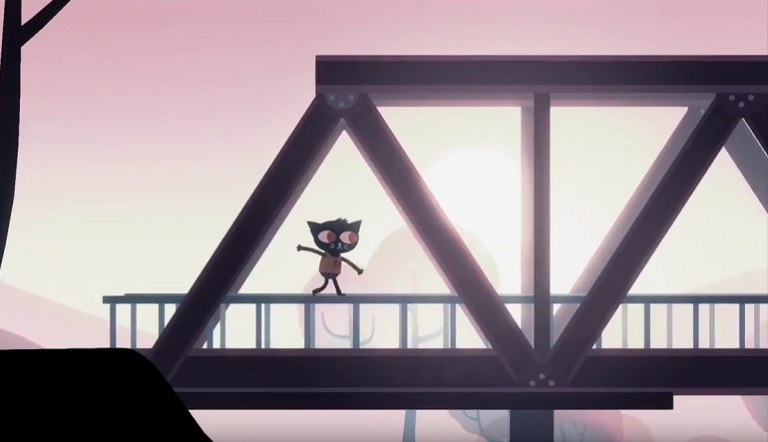She was wearing —
Last weekend, I pulled on a pair of new Cuban heel seamed stockings, a neat skirt and sweater, and went out to shop a sale at La Senza. It had been a rough week, and there, there, perfect and waiting for me, was a short robe on the sale rack, tissue-thin, in a pale turquoise redolent of Cannes, or what I imagine Cannes to be like, with sleeves made to drape on a languid arm, scalloped with Art Nouveau-style, gilded lace. When we bought it, my husband said, I can just imagine you lounging in this in a Riviera mansion. And that’s just it – they’re tools of imagination, of costume, ourselves the characters in the story. None of this is new. Any seven year old playing dress up knows of this mighty transformative power, what I feel we seldom give enough rhapsodizing to is how we use this storytelling as adults, how articulate we can be without a word, how anyone who buys a magazine and lingers over the editorials is reading the poetry of line, movement, texture, hue, silhouette, in those half-hinted dreamscapes of the fashion editorial, is reading a story, of hope or memory, it doesn’t matter, the point is, you’re dressed for it.
I mean story in a literary sense too, of course: Oscar de la Renta’s SS16 collection, with its azure and rainforest green, its vivid movement, restless silhouettes of gathered skirts and coquettish black ribbons tied just so – deshabille as Kitty Shcherbatsky’s before she makes her debut –to me they’re redolent of Marquez, ruined villas in the rainforest, impossibly lovely debutantes doomed to madnesses and impossible loves, languid river journeys, old families and gamblers and lovers whose entrances are preceded by swarms of yellow butterflies, even indoors – that’s just it, the magic of clothes, of fashion when it sings with poetry’s craft – the butterflies precede you, even indoors.
If there’s a writer who has captured this marvellously, whose awareness of the material is exquisitely coupled with an awareness of what that material stands for in the grander story, it’s Elizabeth Winder in her glorious biography of a young Plath, Pain, Parties, Work: Sylvia Plath in New York, Summer 1953. I’ve read it about five times in the past year, and have been searching in vain for something that comes close to that precise, rarefied awareness since. In it, Winder explores in joyous, exquisite detail the effect of the material – the sensuous, living world of fashion, parties, food, and travel – on a young Sylvia Plath, describing in celebratory detail the clothing, food, and pop culture that shaped the young poet’s sensibilities, her wardrobe of “black and white cut with cherry red,” her “wet red lipstick” and its “carnation scent.” She revels in the details of line, form, dress, material, not just because Plath herself revelled in these details, but because there is an awareness of the setting of the stage, the image – Marilyn Monroe lit up forever by that glow in the Milton Greene portraits, Anna Karenina in her black dress – this is what she was wearing when she was made legend. Luminous forever. “Sylvia perches in the sand, like a Sphinx in a white bikini. Her posture is regal and self-assured. She could be an empress, or a stateswoman. She could have been wearing a duchess coronet. The photograph conveys a self-actualized woman – a woman of seemingly boundless resilience, steely discipline, and ultimately optimistic nature. She seems to look out from the photographs and say “this is the part of me that survived – that survived and flourished.”
This is the crux of it, where the material meets us and speaks – it’s both aspiration and assertion, the story without a word. It’s the legend we build and all that comes with it. Hannah Rose-Yee, in her wonderful blog Capture the Castle, has a knack for pinpointing just that – the synopsis of all the garment promises and tells. During long days on campus at university, in my cashmillon sweaters and knife-press trousers, I pored over her descriptions. Later, when summer and my engagement came, long honeyed afternoons longing for my fiancé, eating plums, and listening to “Torna a Surriento” on repeat, and with a budget substantially curtailed in planning for a marriage, I turned to the more accessible tumblr bloggers with urls mentioning gardenias and the Riviera and lines from Ondaatje, with their off-the-shoulder tops, plum-juice-stained wrists, and rose water face mists.
There, again, are more stories, more moods conjured with the detail of a silhouette, the cut of a skirt to swirl just so on a summer day of tennis. In these, it’s not just the glow imparted by rose water, its not just an off-the-shoulder top and gold chain medal of the Blessed Virgin that show off a shoulder blade, a neck, a curl, it’s the suggestion of entire lives – they’re not just rumpled silk, it’s the suggestion of a Riviera night. It’s not just a thin gold chain with a medal of the Virgin on it, it’s the entire Lana Del Rey oevre, and all the stories it tells, it’s reading Odysseas Elytis by the Aegean, it’s preparation for the description that might come, might, might come, some day. Polyvore collections are named for lines of Neruda, paired with stills from “Stealing Beauty”. In the age of the selfie, the age of pervasive surveillance where we know, quite literally, there’s always someone watching, why not, why not make it a good story, even if you’re just brushing your hair, scrolling Instagram, reading a book and eating a plum?
Maybe it’s all narcissism, but then isn’t every poem we write about our feelings, every story we tell? We’re aware we’re being watched, we’re aware the world is brief and so full, so full of all the things that move us, that propel the story, our little story, our little one amid all the many grander and more devastating, and we’re aware always of how we’re still – amid all of it – still reaching and reaching, and hoping. This is how they’ll remember me, the detail to conjure me in memory, the line where they’ll say – she wore a blue dress.

